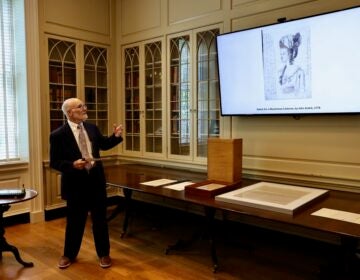Historic flags unfold national pride and struggle
An exhibition of flags and documents at the Museum of the American Revolution traces the national evolution on issues of race and religion.
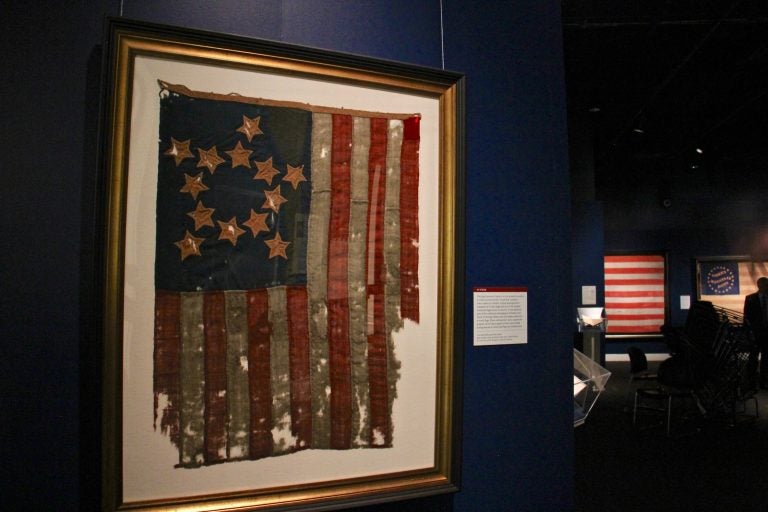
The oldest flag in the exhibit features 13 stars in a star pattern. It is one of the earliest American flags known to survive, made between 1800 and 1825, or possibly earlier. (Emma Lee/WHYY)
The Museum of the American Revolution’s summer exhibition of historic American flags and original founding documents opens this weekend. With the Fourth of July just around the corner, the stage is set for a patriotic season.
But history is never that simple. “Flags and Founding Documents: 1776 – Today” (on view until Sept. 6) features more than 40 flags dating from roughly 1800 to the 1970s and more than 16 original state constitutions, to both celebrate the nation and examine its historic threads of slavery, religious intolerance, and Native American relations.
A flag believed to be from 1846 to 1848, anticipating the coming Civil War, features 14 stars — not representing all the states of the union (there were 30 states in 1848), but only those free states where slavery was illegal. Another flag likely made during the Civil War has no color — its stripes are black and white, emblazoned with the words “No Union With Slavery.” It features just 23 stars, eliminating eleven Southern states that were fighting to secede from the union.
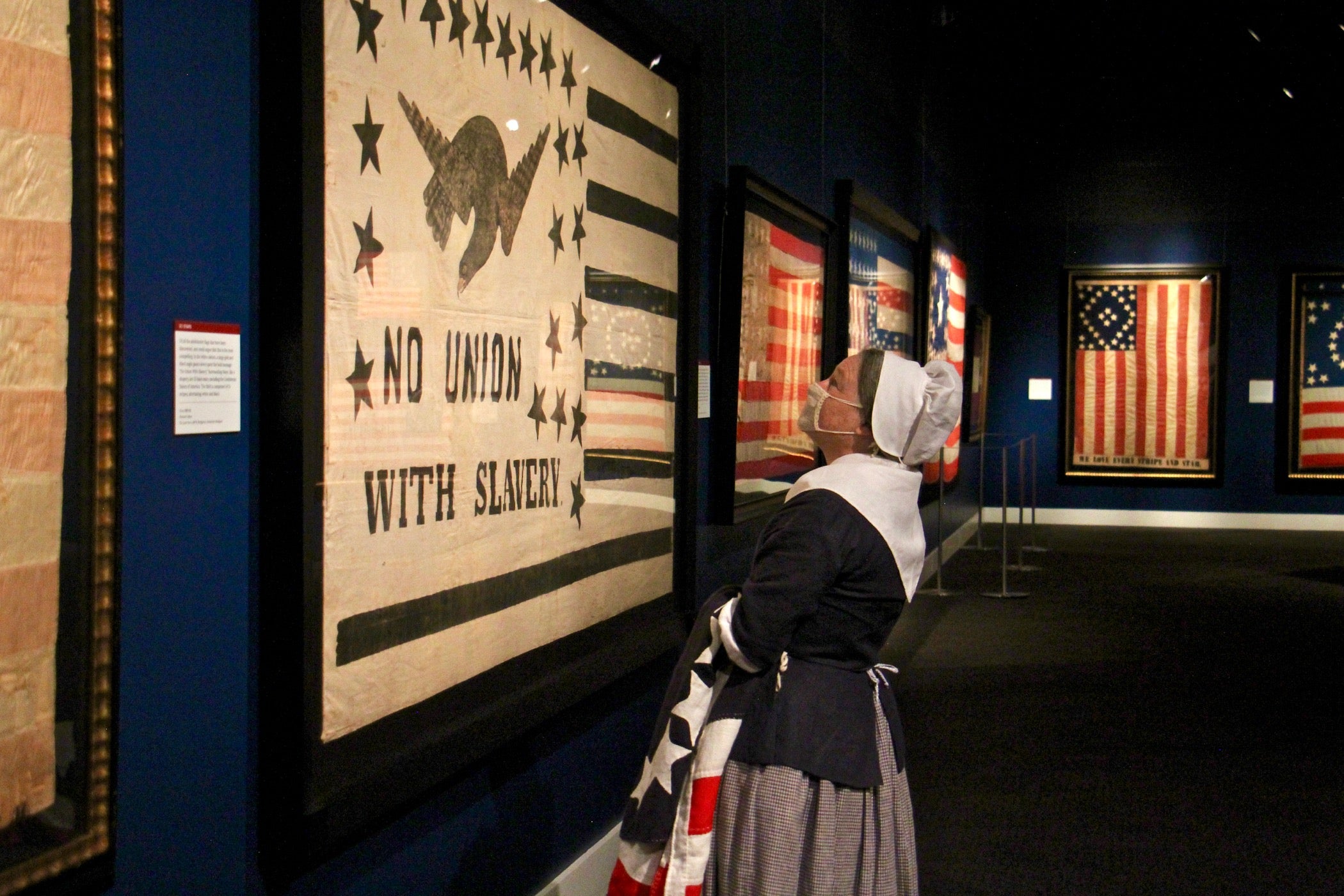
Those abolitionist flags went against the wishes of Abraham Lincoln, who did not want to see the South eliminated.
“Lincoln wanted those stars to be kept on the flag, even though states had seceded from the union already in 1861,” said curator Matthew Skic. “Flag makers just sometimes didn’t listen to that.”
Flag makers in the South did the same. One of the flags on display is the “Stars and Bars” design of the South, featuring just seven stars, eliminating the Northern states.
“Especially right in the beginning of the Civil War, before any sort of Confederate design was settled upon, the Stars and Stripes was the flag of the people in the South, too. They felt ownership of it,” said antiques dealer Jeff Bridgman, who loaned a bulk of the flags to the museum for this show. “Sometimes in early war, you’ll see them remove both stripes and stars from the flag. And the North did the same. I think those are some of the most fascinating flags. In the 19th century, those are generally homemade. They’re generally funky and whimsical and interesting.”
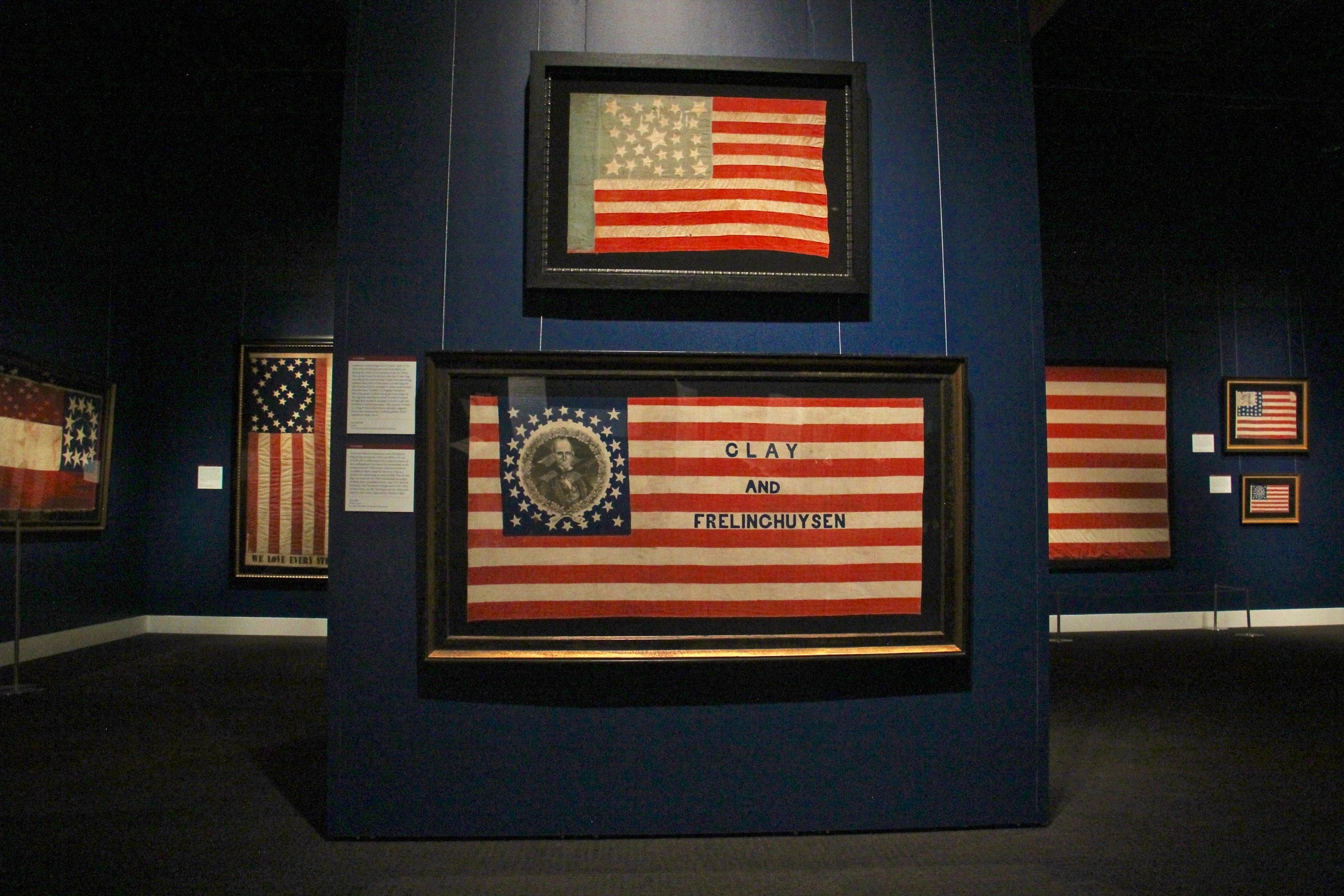
The basic flag design of the United States of America was loosely established in 1777 in an official Continental Congress resolution stating it should be “thirteen stripes, alternate red and white; that the union be thirteen stars, white in a blue field, representing a new constellation.” Within those guidelines, flag makers took great liberties in the number of stars, their configuration, and the shades of red and blue. It was not until 1912 that specifics were nailed down by President William Howard Taft.
Bridgman regards these flags as folk art. They were often uniquely designed by their makers, whose identities are largely unknown. Many on display have imprecisions showing the hand of the artist: Star sizes vary, points are sometimes crooked, and constellations are misshapen. American flags were used to express a wide range of ideas, including commercial advertising, election campaigns, and social ideologies.
“I’m a folk art dealer, that actually was my interest in the flag initially,” said Bridgman. “I quickly got immersed in all the history of it, but from a visual perspective, the 19th-century examples are really maybe the truest form of American folk art.”
Later iterations of the American flag have more than 50 stars, representing territories that aspire to gain statehood. A flag made in Puerto Rico in the 1970s, for example, has 51 stars.
While the flags act as symbols, sometimes altered to express very specific aspects of the nation, the accompanying documents in the exhibition lay out the laws and policies of the nation very directly. The show features a small binder of reproductions of original state constitutions, which visitors can flip through, showing each state’s tolerance for non-Christian elected officials.
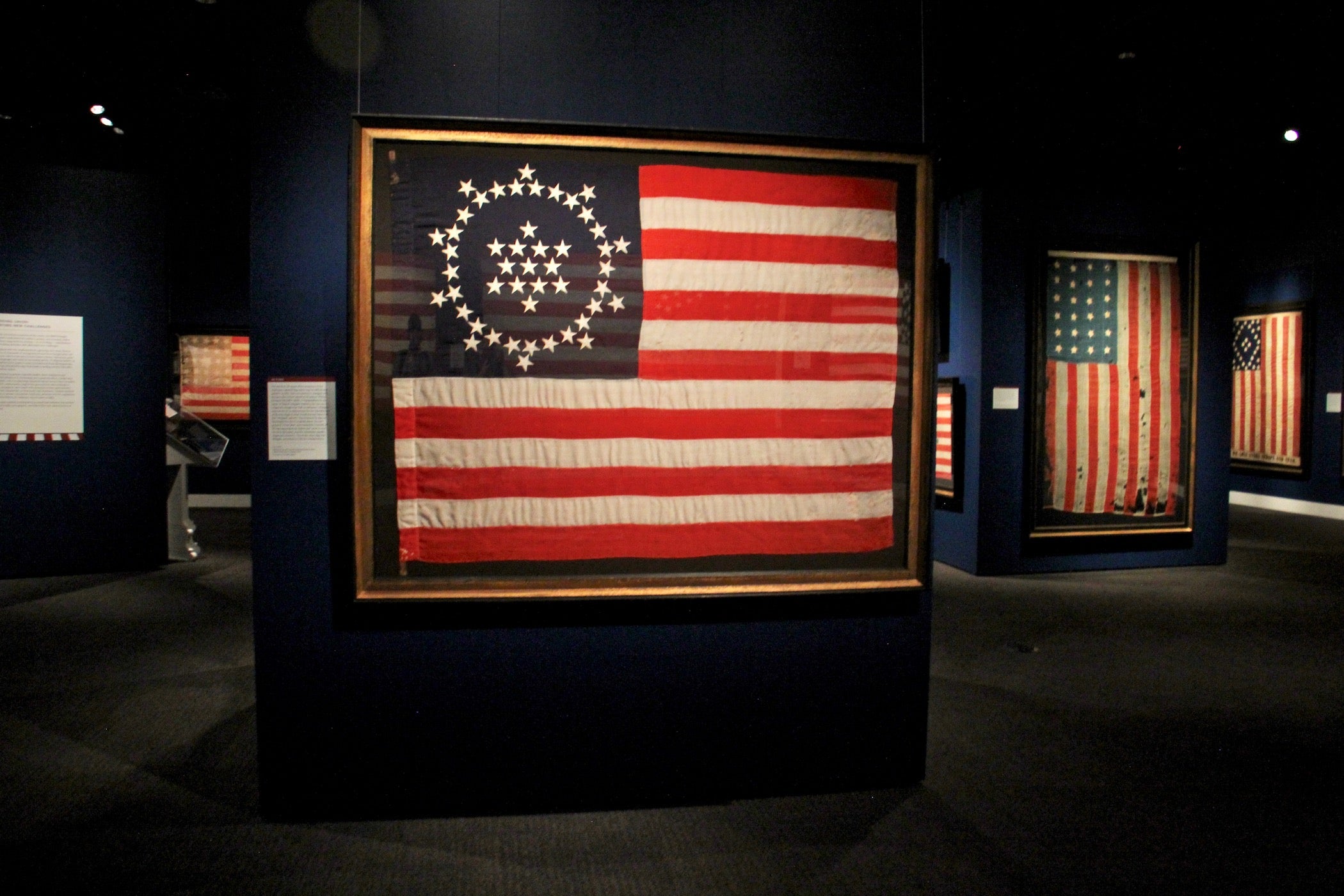
Delaware, for example, declared in 1783 that “No Jew can … hold any place of Trust in the Delaware State.” Pennsylvania did not allow Jewish people to hold seats in its Assembly, but did allow positions as judicial, executive, and military officers.
New Jersey, on the other hand, proactively said in 1783 that Jewish people would be allowed to hold any position.
Native American tribes attempting to gain stature in the new nation would write their own constitutions, modeled after those of the white people who displaced them. Members of the Choctaw Nation, for example, were forcibly relocated by President Andrew Jackson, via the Trail of Tears, from their native land in the region of Mississippi and Louisiana to Oklahoma.
“The Choctaw Nation wanted to kind of stake its claim that, ‘We are an independent, real nation,’” said Skic. “They wrote their own constitution when they were out in their homes that they were forced to go to on the Trail of Tears. They’re really staking their claim that they are a real nation, and their constitution is largely based on the United States Constitution.”
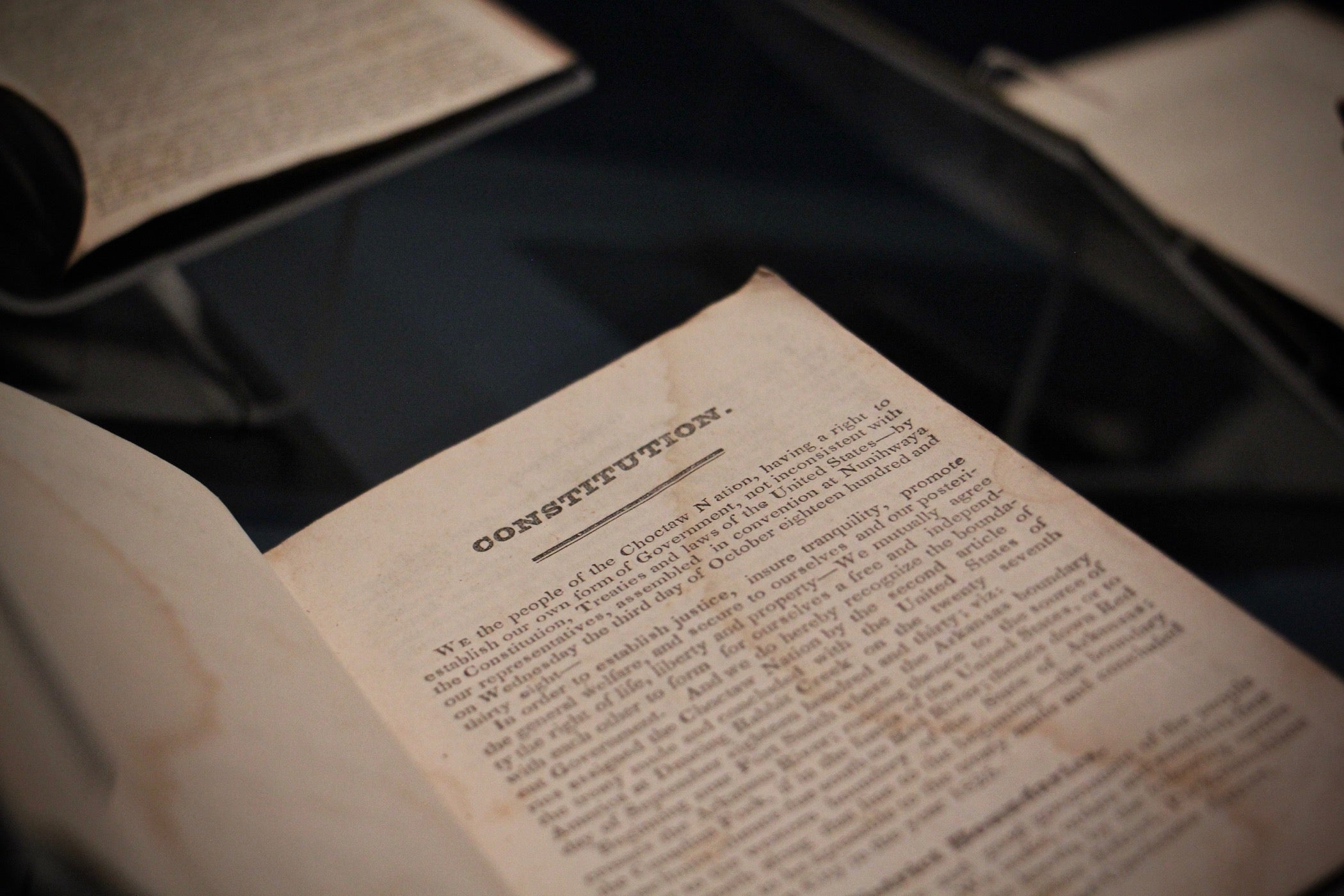
The exhibition does not include some controversial alterations of American flags seen today, such as the Blues Lives Matter flag, on which all color is blacked out save a single blue stripe, designed by a pro-police movement in response to Black Lives Matter; and the Three Percenter militia flag, featuring a circle of stars surrounding three vertical bars, seen during the Jan. 6 insurrection at the U.S. Capitol.
Skic said more current examples of flag alterations will be discussed in planned programming surrounding the exhibition.

Get daily updates from WHYY News!
WHYY is your source for fact-based, in-depth journalism and information. As a nonprofit organization, we rely on financial support from readers like you. Please give today.





